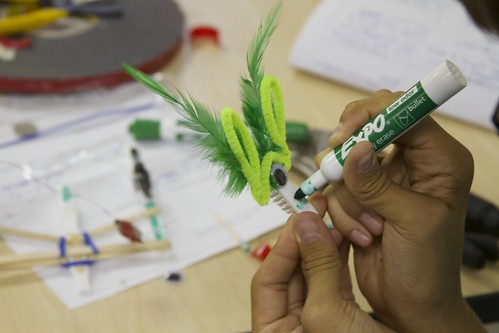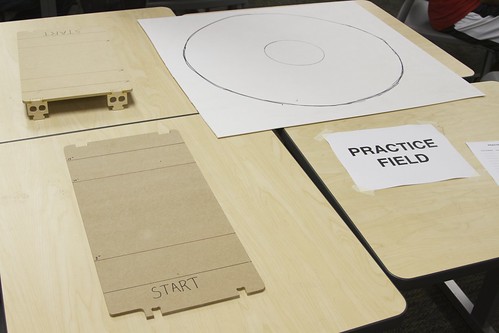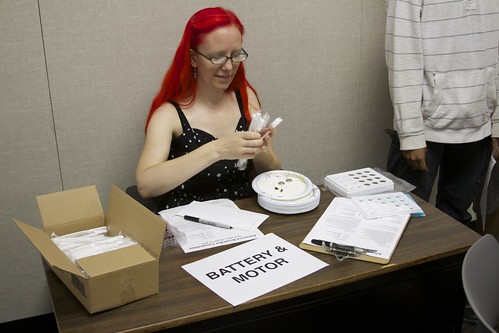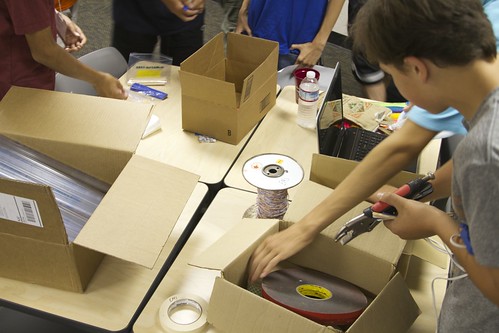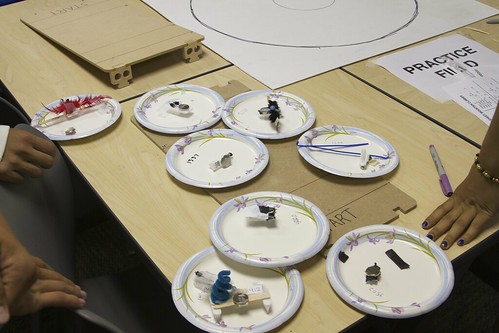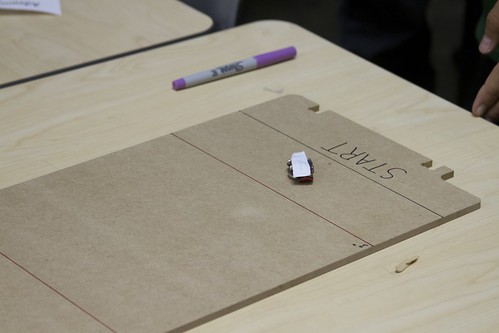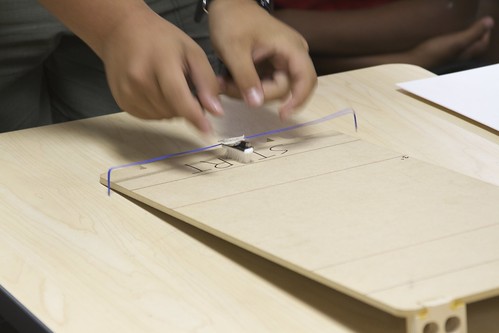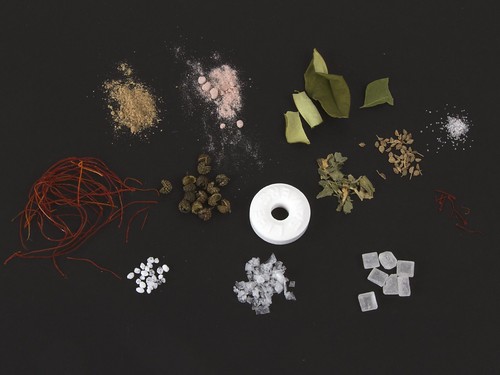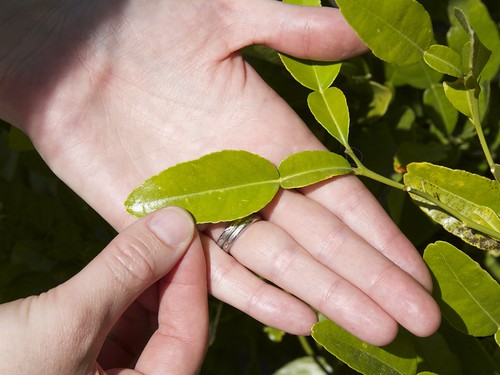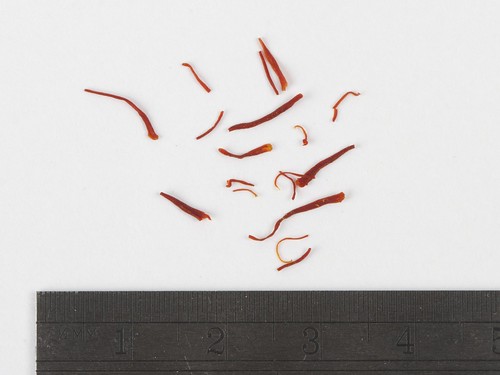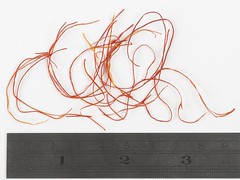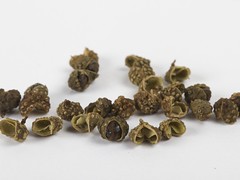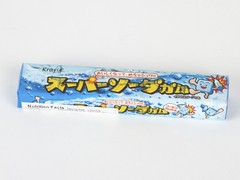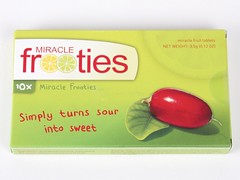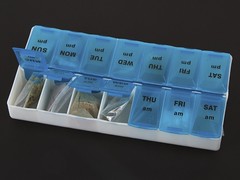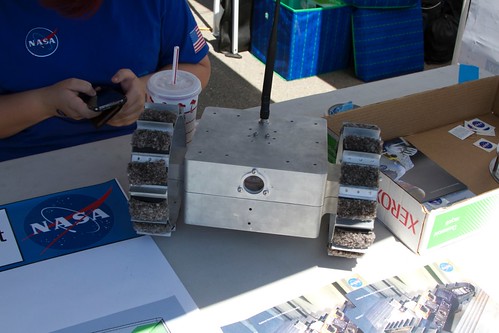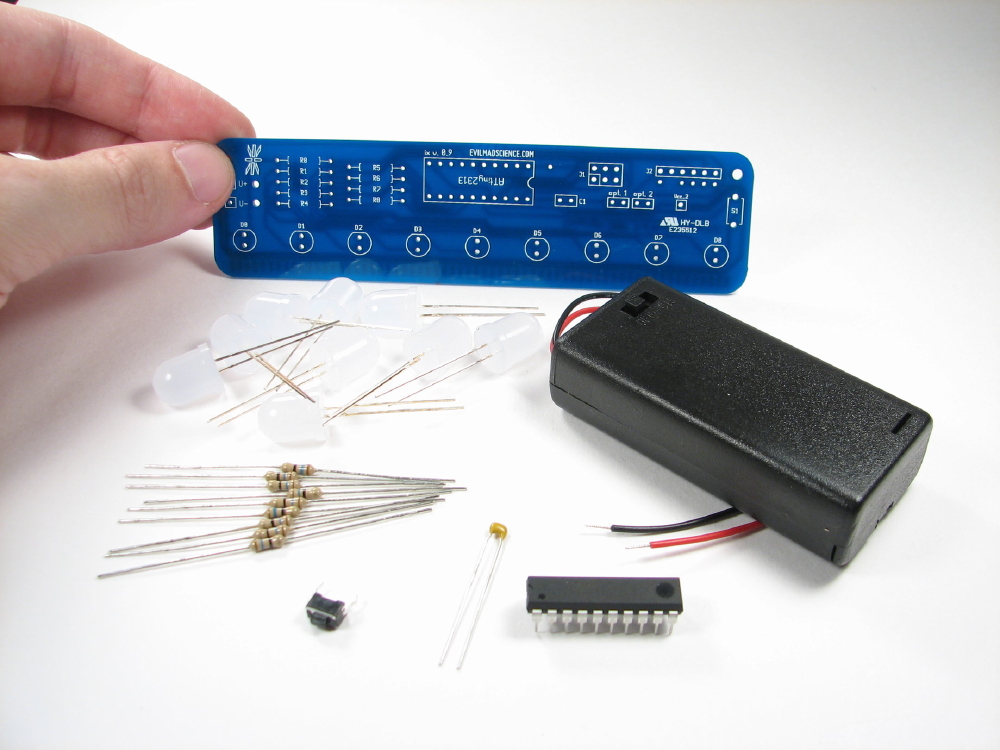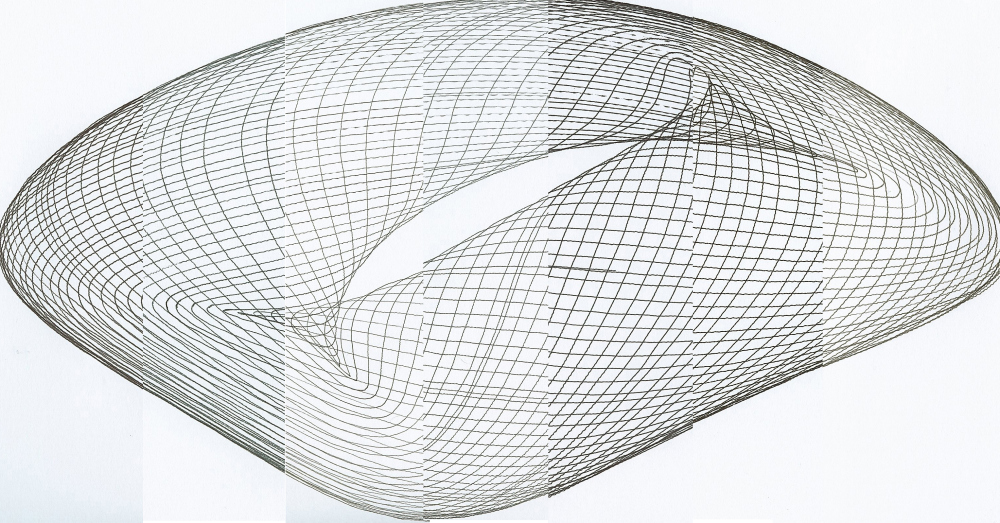For the robotics team that we mentor (FRC team 3501), we created an “Advanced Bristlebot Competition” to serve as an off-season team building exercise. We are publishing our competition template (PDF download) here so that anyone can use it as a starting point for their own events. The goals of the competition are to provide a self-contained, resource-constrained and time-limited introduction to a robot competition environment, and to get new and continuing students working together on solving simple engineering challenges.
The competition consists of three challenges: sprint (distance time trial), mountain climbing (same, on an inclined plane), and sumo (a two-robot competition that rewards going in circles).
The group of students is split into teams of two, trying to pair new students with team veterans.
Each team is given a set of rules and a small pile of toothbrushes, motors, and batteries.
Beyond this, one table is designated for tools and supplies, and has an assortment of craft supplies including things like coffee stir sticks, wires, twist-ties, googly eyes, pipe cleaners, pom-poms, and tape. Building tools include hot glue guns, scissors, bolt cutters (for cutting the heads off of toothbrushes), and wire strippers.
After a building period, the robots are “bagged and tagged” prior to competition. For the BristleBots, this means they are placed on paper plates marked with their team number for inspection to ensure that they meet the competition requirements.
The competition takes place in two rounds, separated by an interval of building time between them. The extra time allows the students to redesign and implement changes based on what they learned during the first round of matches.
We witnessed a couple of great moments during our event. We overheard some students watching our original BristleBot video on a phone, and when they noticed us watching them, they defended themselves, saying, “The rules don’t say we can’t!”
One of the most technically inclined students on the team, after building several prototypes and studying the performance of his BristleBots on the ramp for about 10 minutes asked, “This can’t actually be done, can it?” Minutes later, a veteran student from another team, proudly set his robot on the ramp and it whizzed up in one solid go in about 10 seconds. Later, during competition, another student watched her BristleBot zoom up the ramp in 3 seconds flat, using a variation on that successful design.
Materials & Resources
- BristleBot Competition Template (PDF download): includes arena specifications, rules, suggested schedule, scoring mechanisms, and handouts.
- Vibrating Motors (from Evil Mad Scientist)
- Cheap Toothbrushes (at the Evil Mad Scientist Garage Sale)
- CR2032 coin cell batteries are available from various suppliers including Digi-Key, IKEA, and Costco
- BristleBot: A tiny directional Vibrobot




